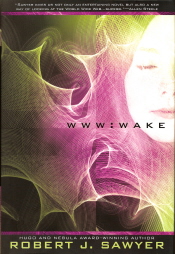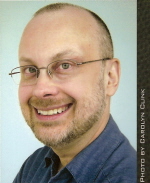Robert Sawyer is one of the most successful Canadian science fiction authors, but the list is daunting. Considering the population of our northern neighbor, the number of writers of science fiction and fantasy is way out of proportion to its size. Margaret Atwood, John Clute, Charles De Lint, Cory Doctorow, William Gibson, Tanya Huff, Guy Gavriel Kay, Spider Robinson, Karl Schroeder, Robert Charles Wilson and Sawyer are just a few of the dozens listed on the homepage for Canadian science fiction.
I met Sawyer at Readercon 10 in 1998, and asked him what he considered the reason for the high number of published science fiction and fantasy authors in Canada. He was quick to answer. “Health care,” he said. “If the government provides health care, you don’t have to have a full-time job just to pay for insurance. Canadian writers have the time to write.” So, just maybe, if President Obama is able to push through a program that makes health care more affordable in the U.S., the science fiction community will thrive even more.
Whether socialized medicine is the reason or not, Sawyer’s success cannot be denied. His novels have won all of science fiction’s top awards: the Hugo for Hominids; the Nebula for The Terminal Experiment; and the John W. Campbell Award for Mindscan.
Here are a few of the things I like about Rob Sawyer: His novels are fast-moving and tightly constructed; his characters are developed so that I care what happens to them; the science in his science fiction is intrinsic to the plot, but not so arcane that readers have to be nuclear physicists to understand it; and he doesn’t imitate others or himself.
I like him best when his stories are complete in one book. But occasionally he gets an idea that he wants to spend some time with. The Hugo-winning Hominids was the merely the first third of his Neanderthal Parallax Trilogy. You had to read Humans and Hybrids to get, as the late Paul Harvey would have said, “the rest of the story.”
I always find it just a little annoying to finish reading a novel and then have to wait a year to find out what happens next. That being said, the first book in the WWW trilogy, Wake, released this month, should whet the appetites of readers for what is to come.
In this initial installment Sawyer introduces four different story lines.
 Teenage Caitlin Decter, a transplanted Texan now living in Canada, is a mathematical genius, but she has been blind since birth. A Japanese researcher offers a chance for a cure. A computerized implant behind the eye might be able to unscramble the signals reaching Caitlin’s primary visual cortex. When the device is turned on, what Caitlin first sees is not the real world, but the inside of the World Wide Web: lines, angles, points and colors that resonate with her mathematical mind.
Teenage Caitlin Decter, a transplanted Texan now living in Canada, is a mathematical genius, but she has been blind since birth. A Japanese researcher offers a chance for a cure. A computerized implant behind the eye might be able to unscramble the signals reaching Caitlin’s primary visual cortex. When the device is turned on, what Caitlin first sees is not the real world, but the inside of the World Wide Web: lines, angles, points and colors that resonate with her mathematical mind.
In a rural village in China, an outbreak of a virulent form of bird flu threatens the possibility of a pandemic. Rather than chance the spread of the disease, the Paramount Leader of the People’s Republic of China agrees to use a poison gas to kill the 10,000 people in the area. To avoid bad publicity, he orders shutting down access to the Internet for a period of time, so that the action can be covered up.
At the Marcuse Institute in Southern California, a hybrid male chimpanzee named Hobo has become reasonably adept at American Sign Language. He even has conversations with an orangutan at another institute in Miami using webcams. The Institute has raised money by selling Hobo’s abstract paintings. But suddenly a strange thing happens: Hobo paints a portrait of his trainer. No chimp has painted a real picture before.
Meanwhile, an awareness is arising in the Internet. Fed by all of these scenarios, this entity is becoming sentient. And Caitlin, who is an ardent student of the life and works of Helen Keller, like Annie Sullivan, becomes its teacher.
Look for all of these stories to come together in the next two books in the WWW trilogy, Watch, next year, and Wonder, in 2011.










